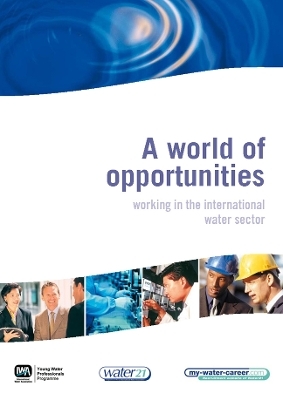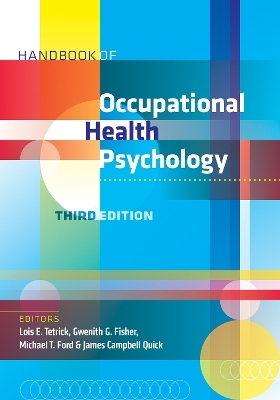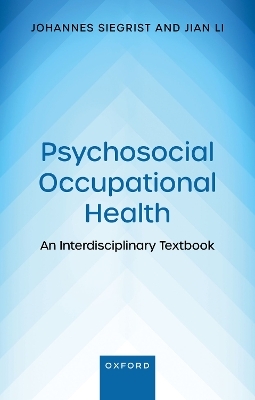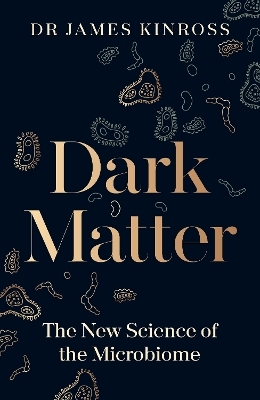
Guidelines for Drinking-water Quality
IWA Publishing (Verlag)
978-1-78040-030-3 (ISBN)
- Titel ist leider vergriffen;
keine Neuauflage - Artikel merken
This fourth edition of the World Health Organization's Guidelines for Drinking-water Quality builds on over 50 years of guidance by WHO on drinking-water quality, which has formed an authoritative basis for the setting of national regulations and standards for water safety in support of public health. It is the product of significant revisions to clarify and elaborate on ways of implementing its recommendations of contextual hazard identification and risk management, through the establishment of health-based targets, catchment-to-consumer water safety plans and independent surveillance. It reflects the renewed focus on primary prevention. Significant additional guidance on good practice is presented, incorporating changes introduced by the first and second addenda to the third edition. Emerging water management issues are comprehensively addressed for a range of circumstances, from household water treatment and safe storage and the bulk supply of water over long distances to the potential implications of climate change.
Additional risk assessments are presented for a number of new chemical and microbial hazards and applied to a suite of pesticides used for public health purposes. Existing reviews on chemicals and waterborne pathogens have been revised to account for new scientific information. The chapter on radiological aspects of drinking-water quality has been comprehensively updated. Even more than the previous edition, the 4th edition of Guidelines for Drinking-water Quality emphasizes achievable practices and the formulation of sound regulations, applicable to low-income, middle-income and industrialized countries alike, that aim to prevent a potential health crisis caused by the consumption of unsafe drinking-water, against the backdrop of rapid urbanization, water scarcity and climate change.
iii Contents Preface xv Acknowledgements xvii Acronyms and abbreviations used in text xx 1. Introduction 1 1.1 General considerations and principles 1 1.1.1 Framework for safe drinking-water 3 1.1.2 Microbial aspects 4 1.1.3 Disinfection 5 1.1.4 Chemical aspects 6 1.1.5 Radiological aspects 7 1.1.6 Acceptability aspects: taste, odour and appearance 7 1.2 Roles and responsibilities in drinking-water safety management 8 1.2.1 Surveillance and quality control 8 1.2.2 Public health authorities 10 1.2.3 Local authorities 11 1.2.4 Water resource management 12 1.2.5 Drinking-water supply agencies 13 1.2.6 Community management 14 1.2.7 Water vendors 15 1.2.8 Individual consumers 15 1.2.9 Certification agencies 15 1.2.10 Plumbing 16 1.3 Supporting resources to the Guidelines 18 1.3.1 Published documents 18 1.3.2 Capacity-building networks 18 2. A conceptual framework for implementing the Guidelines 19 2.1 Health-based targets 20 2.2 Water safety plans 22 2.2.1 System assessment and design 22 2.2.2 Operational monitoring 23 2.2.3 Management plans, documentation and communication 24 iv GUIDELINES FOR DRINKING-WATER QUALITY 2.3 Surveillance 25 2.4 Verification of drinking-water quality 25 2.4.1 Microbial water quality 26 2.4.2 Chemical water quality 26 2.5 Identifying priority concerns 27 2.5.1 Undertaking a drinking-water quality assessment 28 2.5.2 Assessing microbial priorities 29 2.5.3 Assessing chemical priorities 29 2.6 Developing drinking-water quality standards 30 2.6.1 Adapting guideline values to locally relevant standards 31 2.6.2 Periodic review and revision of standards 31 2.7 Drinking-water regulations and supporting policies and programmes 31 2.7.1 Regulations 32 2.7.2 Supporting policies and programmes 33 3. Health-based targets 35 3.1 Setting health-based targets 36 3.2 Disability-adjusted life years, tolerable disease burden and reference level of risk 37 3.3 Types of health-based targets 38 3.3.1 Health outcome targets 41 3.3.2 Water quality targets 42 3.3.3 Performance targets 43 3.3.4 Specified technology targets 43 4. Water safety plans 45 4.1 System assessment and design 49 4.1.1 New systems 50 4.1.2 Collecting and evaluating available data 51 4.1.3 Resource and source protection 53 4.1.4 Treatment 55 4.1.5 Piped distribution systems 56 4.1.6 Non-piped, community and household systems 58 4.1.7 Validation 59 4.1.8 Upgrade and improvement 60 4.2 Operational monitoring and maintaining control 61 4.2.1 Determining system control measures 61 4.2.2 Selecting operational monitoring parameters 62 4.2.3 Establishing operational and critical limits 63 4.2.4 Non-piped, community and household systems 63 4.3 Verification 64 4.3.1 Verification of microbial quality 65 4.3.2 Verification of chemical quality 66 4.3.3 Source waters 67 4.3.4 Piped distribution systems 67 4.3.5 Verification for community-managed supplies 68 v CONTENTS 4.3.6 Quality assurance and quality control 68 4.3.7 Verification of water safety plans 69 4.4 Management procedures for piped distribution systems 69 4.4.1 Predictable incidents ("deviations") 71 4.4.2 Unplanned events 71 4.4.3 Emergencies 72 4.4.4 Preparing a monitoring plan 73 4.4.5 Supporting programmes 73 4.5 Management of community and household water supplies 74 4.6 Documentation and communication 75 4.7 Planned review 76 4.7.1 Periodic review 76 4.7.2 Post-incident review 76 5. Surveillance 77 5.1 Types of approaches 79 5.1.1 Audit 79 5.1.2 Direct assessment 80 5.2 Adapting approaches to specific circumstances 81 5.2.1 Urban areas in developing countries 81 5.2.2 Surveillance of community drinking-water supplies 81 5.2.3 Surveillance of household treatment and storage systems 82 5.3 Adequacy of supply 83 5.3.1 Quantity (service level) 83 5.3.2 Accessibility 85 5.3.3 Affordability 85 5.3.4 Continuity 86 5.4 Planning and implementation 87 5.5 Reporting and communicating 89 5.5.1 Interaction with community and consumers 89 5.5.2 Regional use of data 90 6. Application of the Guidelines in specific circumstances 93 6.1 Climate change, water scarcity and heavy rainfall 94 6.2 Rainwater harvesting 94 6.3 Vended water 96 6.4 Bulk water supply 97 6.5 Desalination systems 98 6.6 Dual piped water supply systems 99 6.7 Emergencies and disasters 100 6.8 Temporary water supplies 102 6.9 Buildings 104 6.10 Health-care facilities 107 6.11 Safe drinking-water for travellers 107 6.12 Aircraft and airports 109 6.13 Ships 112 vi GUIDELINES FOR DRINKING-WATER QUALITY 6.14 Packaged drinking-water 114 6.15 Food production and processing 116 7. Microbial aspects 117 7.1 Microbial hazards associated with drinking-water 117 7.1.1 Waterborne infections 118 7.1.2 Emerging issues 122 7.1.3 Persistence and growth in water 123 7.1.4 Public health aspects 124 7.2 Health-based target setting 124 7.2.1 Health-based targets applied to microbial hazards 124 7.2.2 Reference pathogens 125 7.2.3 Quantitative microbial risk assessment 128 7.2.4 Risk-based performance target setting 131 7.2.5 Presenting the outcome of performance target development 133 7.2.6 Adapting risk-based performance target setting to local circumstances 134 7.2.7 Health outcome targets 135 7.3 Occurrence and treatment of pathogens 136 7.3.1 Occurrence 136 7.3.2 Treatment 138 7.4 Microbial monitoring 147 7.5 Methods of detection of faecal indicator organisms 150 7.6 Identifying local actions in response to microbial water quality problems and emergencies 150 7.6.1 Boil water advisories 151 7.6.2 Actions following an incident 153 8. Chemical aspects 155 8.1 Chemical hazards in drinking-water 156 8.2 Derivation of chemical guideline values 158 8.2.1 Approaches taken 159 8.2.2 Threshold chemicals 160 8.2.3 Non-threshold chemicals 165 8.2.4 Data quality 165 8.2.5 Provisional guideline values 166 8.2.6 Chemicals with effects on acceptability 167 8.2.7 Chemicals not included in the Guidelines 167 8.2.8 Mixtures 167 8.2.9 Adapting guideline values to local circumstances 168 8.3 Analytical achievability 168 8.4 Treatment 170 8.4.1 Treatment performance 171 8.4.2 Process control measures for disinfection by-products 172 8.4.3 Treatment for corrosion control 174 8.4.4 Household treatment 175 vii CONTENTS 8.5 Guideline values for individual chemicals, by source category 176 8.5.1 Naturally occurring chemicals 176 8.5.2 Chemicals from industrial sources and human dwellings 177 8.5.3 Chemicals from agricultural activities 179 8.5.4 Chemicals used in water treatment or from materials in contact with drinking-water 182 8.5.5 Chemicals of emerging concern 189 8.6 Pesticides used in water for public health purposes 190 8.7 Identifying local actions in response to chemical water quality problems and emergencies 192 8.7.1 Trigger for action 194 8.7.2 Investigating the situation 194 8.7.3 Talking to the right people 194 8.7.4 Informing the public 195 8.7.5 Evaluating the significance to public health and individuals 195 8.7.6 Determining appropriate action 198 8.7.7 Consumer acceptability 199 8.7.8 Ensuring remedial action, preventing recurrence and updating the water safety plan 199 8.7.9 Mixtures 199 8.7.10 Water avoidance advisories 200 9. Radiological aspects 203 9.1 Sources and health effects of radiation exposure 204 9.1.1 Radiation exposure through ingestion of drinking-water 205 9.1.2 Radiation-induced health effects through drinking-water 206 9.2 Rationale for screening levels and guidance levels 207 9.3 Monitoring and assessment for dissolved radionuclides 208 9.3.1 Screening of drinking-water supplies 209 9.3.2 Strategy for assessing drinking-water if screening levels are exceeded 210 9.3.3 Strategy for assessing drinking-water if guidance levels are exceeded 210 9.3.4 Sampling frequency 212 9.4 Guidance levels for radionuclides commonly found in drinking-water 212 9.5 Analytical methods 213 9.5.1 Measuring gross alpha and gross beta activity concentrations 213 9.5.2 Measuring specific radionuclides 213 9.6 Remedial measures 214 9.7 Radon 214 9.7.1 Radon in air and water 214 9.7.2 Health risks from radon 216 9.7.3 Guidance on radon in drinking-water supplies 216 9.7.4 Measuring radon in drinking-water 217 viii GUIDELINES FOR DRINKING-WATER QUALITY 9.7.5 Decreasing radon concentrations in drinking-water 217 9.8 Risk communication 217 9.8.1 Reporting results 217 9.8.2 Communicating risks 217 10. Acceptability aspects: Taste, odour and appearance 219 10.1 Biologically derived contaminants 221 Actinomycetes and fungi 221 Cyanobacteria and algae 221 Invertebrate animal life 221 Iron bacteria 222 10.2 Chemically derived contaminants 222 Aluminium 222 Ammonia 223 Chloramines 223 Chloride 223 Chlorine 223 Chlorobenzenes 223 Chlorophenols 224 Colour 224 Copper 224 Dissolved oxygen 225 Ethylbenzene 225 Hardness 225 Hydrogen sulfide 225 Iron 226 Manganese 226 Petroleum oils 226 pH and corrosion 226 Sodium 227 Styrene 227 Sulfate 227 Synthetic detergents 227 Toluene 228 Total dissolved solids 228 Turbidity 228 Xylenes 229 Zinc 229 10.3 Treatment of taste, odour and appearance problems 230 10.4 Temperature 230 11. Microbial fact sheets 231 11.1 Bacterial pathogens 232 Acinetobacter 232 Aeromonas 234 Bacillus 235 ix CONTENTS Burkholderia pseudomallei 236 Campylobacter 237 Enterobacter sakazakii 239 Escherichia coli pathogenic strains 240 Helicobacter pylori 241 Klebsiella 242 Legionella 244 Leptospira 245 Mycobacterium 247 Pseudomonas aeruginosa 249 Salmonella 250 Shigella 252 Staphylococcus aureus 253 Tsukamurella 254 Vibrio 255 Yersinia 257 11.2 Viral pathogens 258 Adenoviruses 258 Astroviruses 260 Caliciviruses 261 Enteroviruses 263 Hepatitis A virus 264 Hepatitis E virus 265 Rotaviruses and orthoreoviruses 267 11.3 Protozoan pathogens 268 Acanthamoeba 269 Balantidium coli 270 Blastocystis 271 Cryptosporidium 273 Cyclospora cayetanensis 274 Entamoeba histolytica 276 Giardia intestinalis 277 Isospora belli 279 Microsporidia 280 Naegleria fowleri 282 Toxoplasma gondii 283 11.4 Helminth pathogens 285 Dracunculus medinensis 285 Fasciola spp. 287 Free-living nematodes 288 Schistosoma spp. 290 11.5 Toxic cyanobacteria 293 11.6 Indicator organisms 294 Total coliform bacteria 294 Escherichia coli and thermotolerant coliform bacteria 296 x GUIDELINES FOR DRINKING-WATER QUALITY Heterotrophic plate counts 297 Intestinal enterococci 298 Clostridium perfringens 300 Coliphages 301 Bacteroides fragilis phages 303 Enteric viruses 305 12. Chemical fact sheets 307 12.1 Chemical contaminants in drinking-water 307 Acrylamide 307 Alachlor 308 Aldicarb 309 Aldrin and dieldrin 310 Aluminium 311 Ammonia 313 Antimony 314 Arsenic 315 Asbestos 318 Atrazine and its metabolites 319 Barium 320 Bentazone 321 Benzene 322 Beryllium 322 Boron 323 Bromate 324 Bromide 325 Brominated acetic acids 326 Cadmium 327 Carbaryl 328 Carbofuran 328 Carbon tetrachloride 329 Chloral hydrate 330 Chloramines (monochloramine, dichloramine, trichloramine) 331 Chlordane 333 Chloride 333 Chlorine 334 Chlorite and chlorate 335 Chloroacetones 337 Chlorophenols (2-chlorophenol, 2,4-dichlorophenol, 2,4,6-trichlorophenol) 337 Chloropicrin 338 Chlorotoluron 338 Chlorpyrifos 339 Chromium 340 Copper 340 xi CONTENTS Cyanazine 342 Cyanide 342 Cyanobacterial toxins: Microcystin-LR 344 Cyanogen chloride 346 2,4-D 347 2,4-DB 348 DDT and metabolites 349 Dialkyltins 350 1,2-Dibromo-3-chloropropane 350 1,2-Dibromoethane 351 Dichloroacetic acid 352 Dichlorobenzenes (1,2-dichlorobenzene, 1,3-dichlorobenzene, 1,4-dichlorobenzene) 353 1,1-Dichloroethane 354 1,2-Dichloroethane 355 1,1-Dichloroethene 355 1,2-Dichloroethene 356 Dichloromethane 357 1,2-Dichloropropane 358 1,3-Dichloropropane 359 1,3-Dichloropropene 359 Dichlorprop 360 Di(2-ethylhexyl)adipate 361 Di(2-ethylhexyl)phthalate 361 Dimethoate 362 1,4-Dioxane 363 Diquat 364 Edetic acid 364 Endosulfan 365 Endrin 366 Epichlorohydrin 367 Ethylbenzene 368 Fenitrothion 368 Fenoprop 369 Fluoride 370 Formaldehyde 373 Glyphosate and AMPA 374 Halogenated acetonitriles (dichloroacetonitrile, dibromoacetonitrile, bromochloroacetonitrile, trichloroacetonitrile) 375 Hardness 376 Heptachlor and heptachlor epoxide 377 Hexachlorobenzene 378 Hexachlorobutadiene 379 Hydrogen sulfide 380 xii GUIDELINES FOR DRINKING-WATER QUALITY Inorganic tin 380 Iodine 381 Iron 381 Isoproturon 382 Lead 383 Lindane 385 Malathion 386 Manganese 386 MCPA 387 Mecoprop 388 Mercury 389 Methoxychlor 390 Methyl parathion 391 Methyl tertiary-butyl ether 392 Metolachlor 393 Molinate 393 Molybdenum 394 Monochloroacetic acid 395 Monochlorobenzene 395 MX 396 Nickel 396 Nitrate and nitrite 398 Nitrilotriacetic acid 403 Nitrobenzene 404 N-Nitrosodimethylamine 405 Parathion 406 Pendimethalin 407 Pentachlorophenol 407 Petroleum products 408 pH 409 2-Phenylphenol and its sodium salt 409 Polynuclear aromatic hydrocarbons 410 Potassium 412 Propanil 413 Selenium 413 Silver 415 Simazine 415 Sodium 416 Sodium dichloroisocyanurate 416 Styrene 418 Sulfate 419 2,4,5-T 419 Terbuthylazine 420 Tetrachloroethene 421 Toluene 422 xiii CONTENTS Total dissolved solids 423 Trichloroacetic acid 423 Trichlorobenzenes (total) 424 1,1,1-Trichloroethane 424 Trichloroethene 425 Trifluralin 426 Trihalomethanes (bromoform, bromodichloromethane, dibromochloromethane, chloroform) 427 Uranium 430 Vinyl chloride 431 Xylenes 432 Zinc 433 12.2 Pesticides used for vector control in drinking-water sources and containers 434 Bacillus thuringensis israelensis 434 Diflubenzuron 435 Methoprene 436 Novaluron 437 Permethrin 438 Pirimiphos-methyl 438 Pyriproxyfen 439 Spinosad 440 Temephos 441 Annex 1 Supporting documentation to the Guidelines 443 Annex 2 References cited 449 Annex 3 Chemical summary tables 468 Annex 4 Analytical methods and achievability 476 Annex 5 Treatment methods and performance 485 Annex 6 Supporting information on radionuclides 504 Annex 7 Contributors to the development of the fourth edition of the Guidelines for drinking-water quality 509 Index 518
| Reihe/Serie | WHO Water Series |
|---|---|
| Verlagsort | London |
| Sprache | englisch |
| Maße | 156 x 234 mm |
| Themenwelt | Studium ► Querschnittsbereiche ► Klinische Umweltmedizin |
| Studium ► Querschnittsbereiche ► Prävention / Gesundheitsförderung | |
| Technik ► Umwelttechnik / Biotechnologie | |
| ISBN-10 | 1-78040-030-6 / 1780400306 |
| ISBN-13 | 978-1-78040-030-3 / 9781780400303 |
| Zustand | Neuware |
| Haben Sie eine Frage zum Produkt? |
aus dem Bereich


